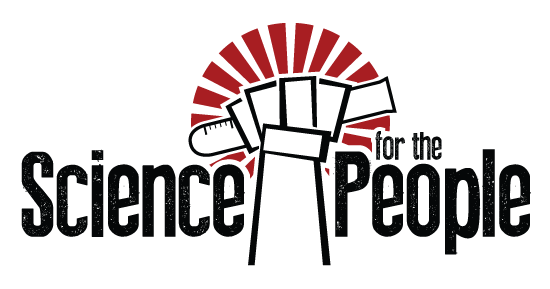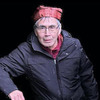Ancient Migrations #627
June 05, 2023

Image from Angela Buttafoco on UnSplash
Humans are a roaming species. We've been traveling from continent to continent since our very earliest evolution. In fact, we've been doing it even before we were humans. This week, we're talking with archaeologist Radu Iovita about the ancient silk road, a travel network that was in use tens of thousands of years ago, and we speak with archaeologist Elroy White and anthropologist Alisha Gauvreau about what the oral histories of Indigenous people have to say about North American settlement and how archaeologists are working with First Nations to confirm those histories.
REFERENCES
Rodriguez A, Yanamandra K, Witek L, Wang Z, Behera RK, et al. The effect of worked material hardness on stone tool wear. PLOS ONE 17(10): e0276166 (2022). https://doi.org/10.1371/journal.pone.0276166
Marreiros, J., Pereira, T. & Iovita, R. Controlled experiments in lithic technology and function. Archaeol Anthropol Sci 12, 110 (2020). https://doi.org/10.1007/s12520-020-01059-5
Smith, G.M., Noack, E.S., Behrens, N.M. et al. When Lithics Hit Bones: Evaluating the Potential of a Multifaceted Experimental Protocol to Illuminate Middle Palaeolithic Weapon Technology. J Paleo Arch 3, 126–156 (2020). https://doi.org/10.1007/s41982-020-00053-6
Alisha Gauvreau, Daryl Fedje, Angela Dyck, Quentin Mackie, Christopher F.G. Hebda, Keith Holmes, Qˇíxˇitasu Yímˇázalas Elroy White, Dúqva̓ísḷa William Housty, Ĝvuí Rory Housty, Duncan McLaren, Geo-archaeology and Haíɫzaqv oral history: Long-term human investment and resource use at EkTb-9, Triquet Island, N̓úláw̓itxˇv Tribal Area, Central Coast, British Columbia, Canada, Journal of Archaeological Science: Reports, Volume 49, 103884 (2023). https://doi.org/10.1016/j.jasrep.2023.103884.
Guests:
- Radu Iovita
- Alisha Gauvreau
- Elroy White
Guest Bios
Radu Iovita
Radu Iovita is a four-field trained anthropological archaeologist with broad interests in the archaeology of human evolution, human-environmental interactions, and stone tool technology. He came to NYU after eight years as a postdoc and eventually Senior Research Scientist at the Leibniz Research Institute for Archaeology in Castle Monrepos, Germany. He got his PhD at Penn under the late Harold Dibble, his Master's at Cambridge with Paul Mellars and his undergraduate at Harvard with Ofer Bar-Yosef. Having participated in field projects all over the Old World, he eventually settled on doing hi own research in the Eurasian loess steppe. In 2013 he completed a survey project in southeastern Romania and began work in Central Asia. He currently directs the European Research Council-funded PALAEOSILKROAD project in Kazakhstan, which investigates the role of geography and climate in Late Pleistocene human dispersals in central Asia.
Alisha Gauvreau
Alisha is an anthropologist and a PhD Candidate at the University of Victoria. She is also an archaeological Field Director and environmental assessment practitioner. She has 13 years’ experience in archaeological resource management and has been working with Indigenous communities in British Columbia since 2009. Ms. Gauvreau is the lead author of well-cited publications co-authored with Indigenous community partners. Her research highlights the importance of collaborating with Indigenous Nations when working in their traditional territories. She explores ways to ethically integrate Indigenous knowledge, oral history and language into collaborative research studies through the guidance of community partners.
Elroy White
Elroy White is a Haíłzaqv member, a potlatch historian, hereditary chief, and an archaeologist. He indigenizes archaeology with his ancestral language, stories and ceremonies. His ancestral past inspires him to act as a positive role model for all Indigenous people. This opportunity was nonexistent to ndigenous relatives during this painful history. His archaeological approach is called M̓ṇúxvit (to be one) that encourages collaboration but with haíłzaqv leading projects with intergenerational crews and by using updated technologies in their fieldwork and interpretation of their results especially through social media.






